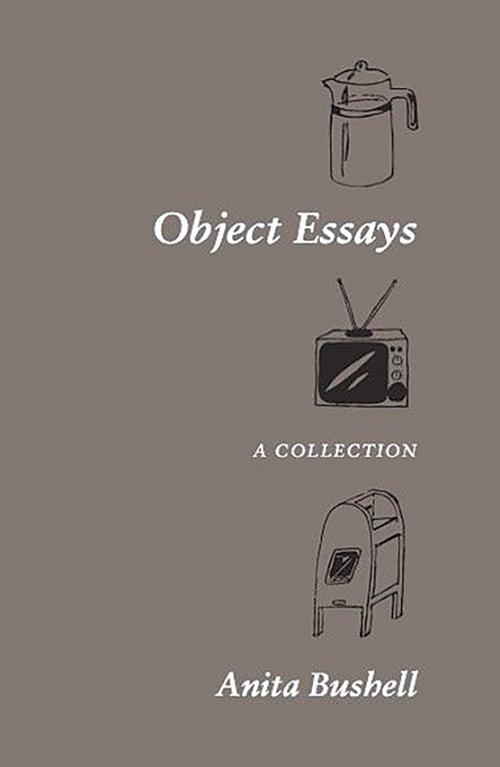
Object Essays
Reviewed by Bob Dixon-Kolar
March 1, 2024
By Anita Bushell. Self-published, 2023. 40 pages. $18/paperback.
Object Essays by Anita Bushell is a collection of ten brief personal essays, each focusing on an object that carries emotional meaning for the author. In the introductory chapter, she explains the three-part process that goes into writing about objects: “First, a well-crafted description of the object that will interest the reader. Second, what the object represents for the writer; this is where feelings and emotions come in. Finally, there needs to be a larger idea that is tied to the first and second elements.” The object comes to embody this larger idea.
Abiding by these writing guidelines in all her essays, Bushell explores her attachment to selected items from her past, including a television set, a Pyrex pot, an index card, socks, and a mailbox. A minimal line drawing of each object by artist Niko Prytula sits above its chapter title. My favorite essay in the collection, “Pen,” illustrates Bushell’s process. She begins by noting a chance encounter with a store clerk who complimented her on her beautiful signature. This gave rise to a conversation about her “love of pens and penmanship.” As her essay develops, she paints a picture of her elementary school days, when she became a dutiful apprentice to the Palmer Method, tracing elegant letter shapes with her “Schaeffer student fountain pen.” Mastering the skill of good penmanship required a few years of her persistent effort.
Her use of exact, buoyant language shows her fondness for pens of every sort. She tells of “the classic Parker Jotter” her childhood pediatrician used “as she took notes in my file,” and “my most fancy Mabie Todd, a beautiful heavy pen with a red and pale blue iridescent pattern.” She exclaims: “Bics, and Flairs and clicky pens, oh my.” Her reflections then connect this everyday object to a larger idea. In trying to tutor a young girl in the skills of cursive writing, Bushell comes to this realization: “Penmanship, like any other craft, needs to be developed over time and deserves the full attention of the teacher and the student. It should never just be an ‘add-on.’”
Some essays in her collection focus on how objects are bound up with cherished moments with friends and family members. Regarding a floral blouse found in her grandmother’s home, she writes that it “has absolutely no value as a clothing item, but I can’t begin to describe the feelings it elicits about time spent with a grandparent who left us long ago.”
Bushell illustrates how things in our lives become woven into webs of personal significance. Such objects are special and should be defended and celebrated. She goes to bat even for the humble index card, which she still finds highly useful for capturing a single idea and for its role in organizing research. Yet an index card appears helpless against the power of desktop Office suites, sophisticated note-taking apps, and, God help us, artificial intelligence. Nevertheless, it strikes me that Bushell is not dazzled by news of each heralded technological advancement. I imagine her saying, “Yes, it is technological, but what does it really advance?” On this point, I refer you to Bushell’s much-discussed article “Zoom Spells Doom and Gloom: The False Promise of Virtual Meetings” (FJ Mar. 2023).
Although Bushell has a long involvement with Quaker worship, fellowship, and education, this book is intended for general readers. Her essays will, I suspect, appeal most to folks who share her cultural touchpoints, such as 1970s television shows, classics of American film, and the lost art of composing handwritten letters. Object Essays is an enjoyable read, appreciative, witty, and full of heart.
Bob Dixon-Kolar is an emeritus professor of English. He and his family are members of Evanston (Ill.) Meeting.



Comments on Friendsjournal.org may be used in the Forum of the print magazine and may be edited for length and clarity.